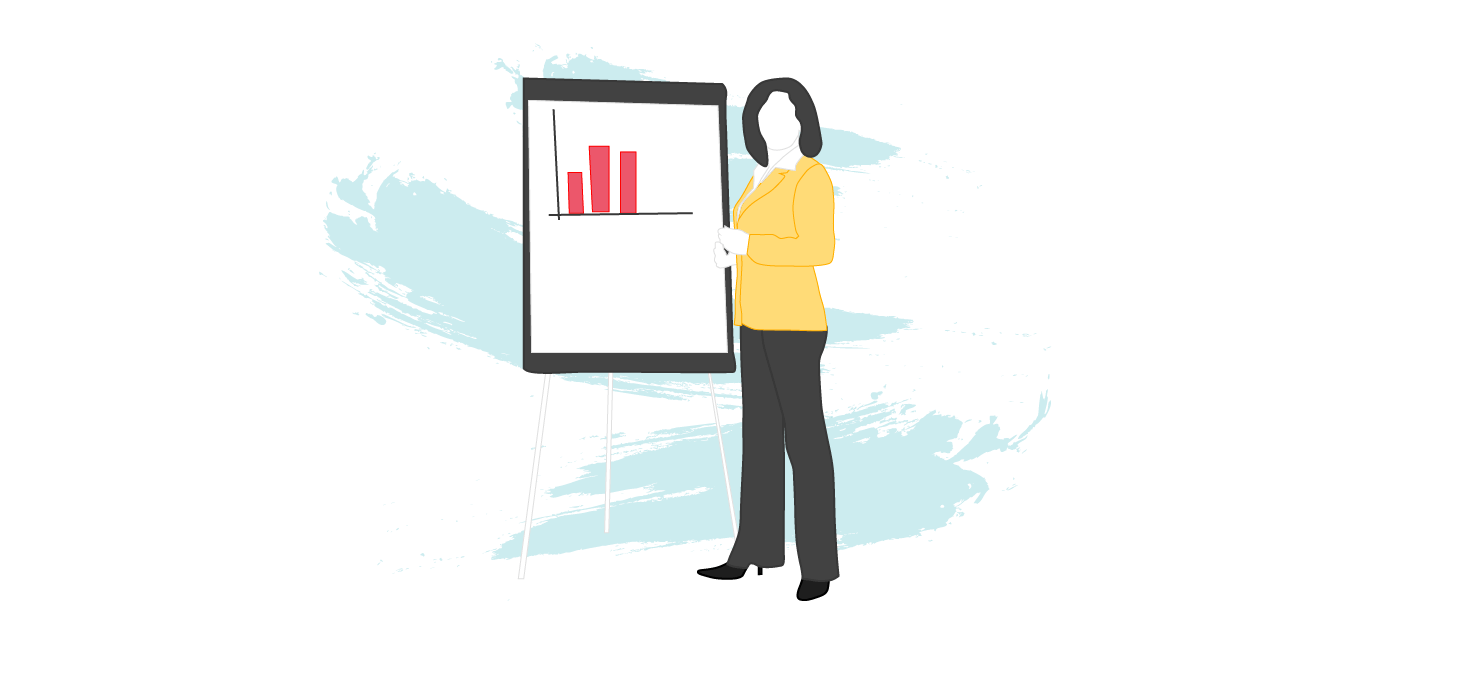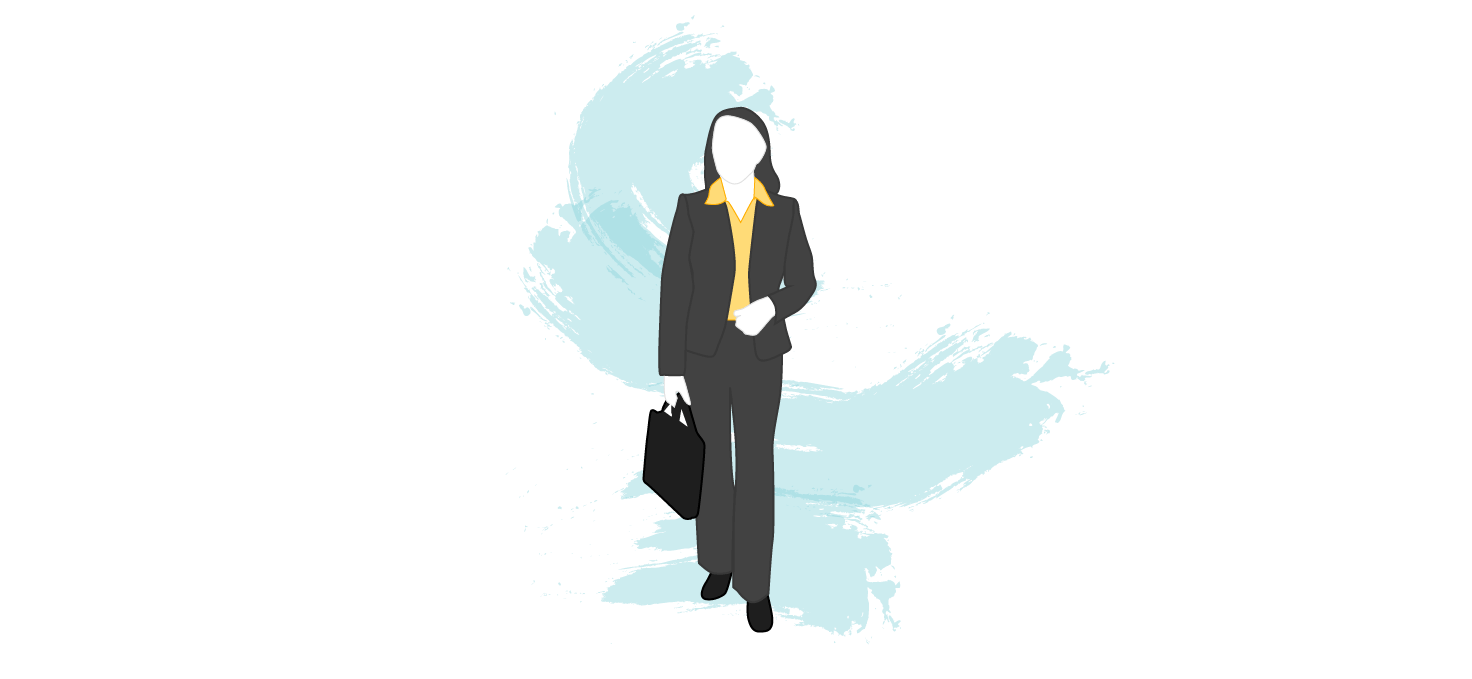When will your income drawdown pension run out? Enter the anticipated size of your pension pot at retirement and follow these easy steps to calculate how long your pension will last.
2015 Pension Freedoms Explained
What Do The Pension Freedoms Mean?
The pension freedoms were introduced in April 2015 and revolutionised the way you could access your defined contribution pension at retirement.
A defined contribution or money purchase pension is one where the benefit at retirement is defined by the contributions you made throughout your working life, as well as any potential investment growth on the fund, less fees and charges over time.
It’s also defined by what you choose to do with your pension at age 55, the earliest you can access your pension. When you reach age 55, you now have six options:
- Buy an annuity
You can buy a secure income for the rest of your life with all or some of your pension pot. An annuity pays out a regular, taxable income until you pass away. - Take a flexible income from pension drawdown
Pension income drawdown in its full flexibility was opened up to a far wider number of people by the pension freedoms, hence the new name: flexi-access drawdown. You can leave your pension invested, with the potential for future growth, and take an income or lump sums from the pot as required to fund retirement. - Withdraw your pension as a series of lump sums (UFPLS)
When you withdraw your pension as a series of uncrystallised funds pension lump sums, the first 25% of the sum you withdraw is tax free and the remaining 75% is taxable at your highest marginal rate of income tax. - Mix the options
You can mix an annuity and drawdown if you wish, either now or in the future. - Cash in your whole pot
You have the option to cash in your entire pension pot at age 55 if you wish, but this will be subject to a significant amount of tax. 25% will be tax-free and the remaining 75% will be added to all your other income and taxed at your highest marginal rate of income tax — potentially up to 45%. Not only could the tax bill be large, but you won’t be left with money to live on in your old age. This is rarely an advisable option for most people. - Do nothing!
Just because you can access your pension, doesn’t mean you need to straight away. You can leave your pension invested for the future and continue to make contributions if you wish until you do decide to retire. This could be the best option from an inheritance tax standpoint, as all the while the pension is invested under a pension wrapper there’s no inheritance tax to pay.
What Did the Pension Freedoms Change?
One major thing the pension freedoms changed is that no one has to buy an annuity at retirement anymore if they don’t want to. Full pension flexibility was opened up to everyone who wants to use it.
Previously, flexible drawdown, the precursor to today’s flexi-access drawdown, was only permitted among those with a guaranteed pension income elsewhere of £12,000 per year. This meant only wealthier pensioners had the full flexibility and pension freedom available to them.
Anyone else had to either buy an annuity or enter capped drawdown, which limited the amount you could take from your pension each year to 150% of the value of a single life annuity that a person of your age could purchase based on rates from the Government Actuary’s Department.
In Drawdown Before 2015?
If you were in flexible drawdown prior to the 2015 pension freedoms, you’ll have been moved automatically to flexi-access drawdown.
If you were in capped drawdown, however, you’re presented with a choice. You can choose to stay in capped income drawdown or move to flexi-access drawdown, either actively, by notifying your pension provider, or simply by breaching the old cap that was in place and taking more from your pension than you were entitled to under the old rules.
While flexi-access drawdown offers more freedom and flexibility than capped income drawdown, one of the major benefits of staying in capped drawdown is that you retain your full pension annual allowance (the amount you can pay into your pension each year and still get tax relief).
With flexi-access drawdown, your annual allowance is reduced once you start taking an income — this is known as the money purchase annual allowance and currently stands at just £10,000 per year compared to a maximum of £60,000 per year otherwise.
No More Pension Death Tax
Another major change the pension freedoms introduced was the abolishing of the 55% ‘death tax’ on pension pots.
Prior to the pension freedoms, if you’d accessed your pension pot in any way, 55% of your pension would be eaten up in taxes if you passed away without spending all of your pension and left it to beneficiaries.
Now this is not the case. If you pass away before the age of 75, your pension is typically paid free of income tax to your loved ones. If you die after 75, your loved ones will typically have to pay income tax at their highest marginal rate on any income they receive from the pension.
In neither case, providing the pension remains invested under the protection of a pension wrapper, is inheritance tax payable on an inherited pension as pensions are typically held outside the estate for inheritance tax purposes.
Find > Organise > Simplify

Should I Buy An Annuity With My Pension?
While you don’t have to buy an annuity anymore thanks to the 2015 pension freedoms, the fact remains that they’re one way to secure you a regular, guaranteed retirement income for the rest of your life after you stop working.
An annuity will continue to pay out for as long as you live, no matter how long that might be. So, even if you’ve received more from an annuity than you paid to the annuity company originally to secure the income, you’ll still receive that guaranteed income regardless.
Of course, the downside is that you might not live for long enough after exchanging your pension pot for an annuity to get back in income more than you paid to the annuity company, so you could receive less than you initially invested.
Annuity rates have been very low in recent years for a number of socioeconomic reasons, from poor yields on ultra-safe investments such as cash and government bonds to annuitants living longer, meaning companies are paying out for longer and are therefore reducing annual payouts to compensate.

With an annuity, it’s vital you shop around to ensure you’re getting the best deal. Don’t just take the annuity offer that’s on the table from your pension provider — they may not be offering you the best rate.
Sam Barr-Worsfold
Financial Planner at Drewberry
Which Annuity Is Right For Me?
The two most common types of annuity are single life annuities (based on just one life, so they’ll pay for the rest of the life of the pensioner, known as the annuitant, and then stop) and joint annuities, which are based on the life of two people, usually a married couple or pair of civil partners.
A single annuity will pay out for the rest of your life and then cease on your death, leaving no further income for anyone else. A joint annuity will continue to pay out after your death to a surviving spouse / civil partner, typically at a reduced rate (say 50% of the income you were in receipt of). With a joint annuity, as the annuity company assumes they’ll be paying out for longer, rates tend to be lower than for single annuities.
Other types of annuity include:
- Enhanced annuities
If you’re ill or you smoke, your life expectancy is seen to be reduced and so you’re often offered a higher annuity rate than a healthy non-smoker. - Annuity with guarantee period
A guarantee period is a set period from the date of the annuity starting; if you pass away within this guarantee period, your annuity will continue paying out for the remainder of the guarantee period. - Index-linked / escalating annuity
An indexed annuity will rise each year in line with inflation to prevent your income remaining fixed over the long-term and being eroded by inflation. - Temporary annuity
Rather than paying out for the rest of your life, a short-term annuity will pay out for a fixed period, say 5 or 10 years, making them typically cheaper than lifetime annuities - Capital protected annuity
A capital or value protected annuity is generally most suited for those who want their loved ones to receive some return of the capital they invested in an annuity after they pass away. If there’s any part of the initial capital leftover when you die, your family receives it back as a death benefit. So if you protected an entire annuity bought with a £100,000 pension pot and died after only receiving £30,000 in annuity income, your family would receive a value protected capital return of £70,000.
How Are Annuities Taxed?
When you buy an annuity, you can choose to take an initial 25% of your pension pot upfront as a tax-free cash lump sum. This is known as a pension commencement lump sum (PCLS).
You don’t have to take this; the less you choose to take as an upfront cash lump sum, the more you’ll have to buy an annuity income and therefore the higher your annuity income will be.
Once you’re in receipt of an annuity, it’s added to the rest of your income and taxed at your highest marginal rate of income tax. Income will be from across the spectrum, such as:
- Savings and dividend income
- Income from property rentals
- Any wages you’re paid for work you’re continuing to do
- Pension income / pension withdrawals above the 25% tax-free allowance.
Everyone has a personal income tax allowance of £12,570 that they can receive each year before having to pay income tax. Above this, you start to pay income tax just as you would if you were in receipt of employment income.
Do I Have To Use All My Pension To Buy An Annuity?
No, you don’t have to use your entire pension pot to buy an annuity if you don’t want to. You can opt to use some of your pension to buy an annuity and drawdown the rest, or use pension drawdown first and buy an annuity later.
This said, the more of your pension pot you use to buy an annuity, the higher your annuity income will be.

The one thing you can’t do is use your entire pension pot to buy an annuity and change your mind. An annuity is a permanent, lifelong arrangement and cannot be unpicked once you’ve bought one.
Andrew Southgate
Senior Financial Planner at Drewberry
Pension Income Drawdown
Pension drawdown — or, to give it its new proper name, flexi-access drawdown — allows you to take an adjustable income from your pension.
It’s a way of leaving your pension invested, allowing for the opportunity of potential future investment growth throughout retirement, and taking a regular income from the performance of those investments. You can also take lump sums from your drawdown pension if you need to.
Income drawdown offers a far more flexible way of accessing your pension when compared to an annuity because it effectively allows you to dial up and down your pension income as required.
You can treat your drawdown pension as a sort of ‘bank account’ and withdraw lump sums as required, or you can set up a regular payment to help meet your everyday financial needs in retirement. You can also mix these two options.
The risk with drawdown that isn’t present with an annuity is that the money could run out if you take too much, too soon, your investments underperform or you live longer than expected. There’s also investment risk, which means the value of your pension pot could fall as well as rise, so you could get back less than you invested.
How Does Pension Drawdown Work?
At retirement, you designate your pension savings to a drawdown fund, choosing the investments you want the pot to be invested in for the time being.
Just as before buying an annuity, you have the option to take 25% of your pension upfront as a tax-free cash lump sum. Once you take this 25%, the remainder must be used in some way in accordance with the pension freedoms listed above — it can’t remain invested with your original pension provider any longer.
Once the funds are in drawdown you can create your own flexible schedule of payments, either investing the capital to generate an income or withdrawing ad hoc lump sums as required (or a mixture of the two).
While moving the cash into drawdown is generally quite straightforward, it’s vital you get the initial process right as this could have tax implications later on. In fact, how pension drawdown is taxed is the most complicated part of drawing down your pension. That’s why it’s generally recommended you speak with an expert, who’ll also be able to help you choose the initial investments you want your drawdown fund to be invested in if you’re unsure.
Fees and Charges
As your pension remains invested, there will be ongoing fees and charges for managing those investments, as well as potentially fees on withdrawals from your pension pot. You should carefully compare each drawdown provider’s fees and charges to ensure you’re getting the best deal.
How Do I Set Up Income Drawdown?
Detailed below are a very simplified set of steps designed as a guideline if you’re considering flexi-access drawdown for your retirement income. The actual process of pension drawdown requires a great deal of consideration and financial planning in areas such as tax and longevity risk. That’s why we would always suggest your first step should be contacting a qualified pensions expert such as one of our experts here at Drewberry.
- Contact a pension drawdown expert
They can help you decide whether it’s right for you and put together a personalised drawdown programme - Find a provider that permits flexi-access drawdown
Your current pension might not offer such flexibility, and even if it does an experienced adviser might be able to find you a better option - Choose your drawdown fund or funds
There are a wide range of investment options available to you, all of which are best discussed with your adviser - Decide if you want to take up to your 25% tax-free cash lump sum
Taking a lump sum could affect how your drawdown pension benefits are taxed later on - Create your own programme of lump sum / income payments
This can be tailored to suit your own personal needs, although you will always have to consider the tax implications of your withdrawal and the overall size of your pension pot to ensure it doesn’t run out too soon.
How Is Pension Drawdown Taxed?
The income and lump sums you take from your drawdown pot will be taxable at your highest marginal rate of income tax.
What Is A Pension UFPLS?
An alternative to taking your pension as an adjustable income via flexi-access drawdown is to take it as a series of cash lump sums. This is known as taking uncrystallised funds pension lump sums (UFPLS), although even as an acronym that’s quite a mouthful so you may see it referred to as a FLUMP.
The difference between UFPLS and income drawdown is that while with drawdown you need to ‘crystallise’ (a fancy word for accessing or touching funds in your pension) your pot before withdrawing money by moving it to a drawdown fund, this isn’t the case with UFPLS.
UFPLS is slightly less complicated that income drawdown because you don’t have to find a drawdown provider and decide where you want to invest your drawdown fund.
However, not every pension provider will allow you to withdraw a series of UFPLS straight from your pension pot and there may be charges each time you do so.
Moreover, just as with drawdown, there’s a risk of the money running out too fast if you take too much, too quickly from your pension, live longer than expected or your underlying investments underperform.
How Is A Pension UFPLS Taxed?
Each time you withdraw a lump sum from your pension, 25% of your withdrawal will be tax-free. Every 25% tax-free lump sum has to come with an accompanying 75% of taxable cash. So if you want £10,000 tax-free using a UFPLS, you’d also have to take a non-negotiable £30,000 of taxable cash.
Can I Have An Annuity And Use Pension Drawdown?
Yes, you can mix and match an annuity and pension drawdown if you want. You can use some of your pension to buy an annuity and use the rest to secure an adjustable income via drawdown.
You don’t have to buy an annuity straight away — you can use your pension pot to draw down an income initially and then, when you’re older, secure an income with an annuity if you wish.
If you have multiple pension pots, you can use different options for each pot, e.g. buy an annuity with one pot and draw an income from another.
Mixing your options can be complicated and could make your tax situation trickier to handle. For this reason, it’s always best to seek the advice of an expert if you’re considering mixing the pension freedoms as a way to take your retirement income.
How Will My Pension Be Taxed If I Mix The Options?
How your pension will be taxed when you have an annuity and pension drawdown will depend on just how you mix the options available, how much you take in adjustable income and the size of the annual annuity income you receive.
If you take an adjustable income which, when added to your other income such as the State Pension, your annuity and any other income you might have, adds up to more than the tax-free income tax allowance then you’ll pay tax on your pension income at your highest marginal rate.
Can I Take My Whole Pension in One Go?
Yes you can — under the new pension freedoms there’s technically nothing to stop you taking your whole pension in one go.
If you choose to withdraw your entire pension pot in one go, 25% will be tax-free and the remaining 75% will be taxable at your highest marginal rate.
Taking large lump sums in this way could also affect your entitlement to certain means-tested state benefits, another issue you’ll have to factor in.

It’s unlikely that taking your entire pension pot in one go will be the best course of action.
This is because you’re likely to pay a higher rate of tax on it if you draw it this way, plus you may find you struggle to survive financially later on in life without a pension income to rely on.
Jonathan Cooper
Senior Paraplanner at Drewberry
How Much Tax Will I Pay if I Take My Entire Pension?
This depends on the size of your pension pot and how much income you have from other areas. Below is an example of how much income tax you might pay if you cash in your entire pension pot. The table assumes the individual has a defined contribution pension pot worth £200,000 and has taken the 25% tax-free cash lump sum.
Source of Income | Income |
|---|---|
75% of a £200,000 Pension Pot | £150,000 | Gross Taxable Income: £150,000 |
You won’t receive your income tax personal allowance of £12,570 because you have an adjusted income in excess of £125,000. Your personal allowance tapers down by £1 for every £2 you earn above £100,000 until it reaches £0, so by taking such a large taxable income from your pension you’re increasing the amount of tax you pay to more than a third of your total taxable withdrawal.
In the above scenario, what could you do with more than £50,000 of cash you’re handing to the taxman by taking your entire pension pot in one go? For most people, this would make a substantial difference to their lives, so it makes no sense to fork it over to HMRC when you have other, potentially more tax-efficient options available to you.
Do I Have To Access My Pension At 55?
No, just because you can access your pension from the age of 55 doesn’t mean you have to. You can choose to do nothing if you want.
Many schemes have a selected retirement date that you’ll likely have picked when you joined the pension, or were defaulted into. This may be 60 or 65, but check with your scheme.
Even when you get to your selected retirement age, assuming it’s older than age 55, you still don’t have to take your pension if you don’t want to. Perhaps you’re still working and aren’t ready to give it up yet. Whatever the reason, it’s up to you when you take your money.
If you leave your pension pot invested, you can pass the entire pot down to your loved ones when you die totally free of tax if you die before the age of 75.
Your pension will still be invested in the markets and will therefore have the opportunity to grow, although of course your pension could fall as well as rise in line with investment performance.
Moreover, you’ll still be able to contribute to your pension at a maximum of £60,000 or 100% of your earnings, whichever is lower, if you leave it invested. In contrast, once you’ve started flexibly accessing your pension, you’re subject to the money purchase annual allowance cap of £10,000 per annum that you can save into a pension.
You may be charged extra fees if you don’t start taking your money when you reach your selected retirement age. Check with your pension provider to see whether this might apply to you.

Use the Pension Pot Calculator below to see how much your pension could grow by if you leave it invested after the age of 55 based on its size today and the you still paying in regular contributions.
John Spink
Head of Financial Planning at Drewberry
Our Advice on the Pension Freedoms
Getting access to your pension from the age of 55 can be a daunting experience. How should you take your pension? Which option is right for you, or should you consider a mix of the pension freedoms? Might it be better to leave your pension untouched for now if you don’t need it straight away?
That’s where the experts at Drewberry can step in to help. Pop us a call on 02084327334 or email wealth@drewberry.co.uk if you’re about to access your pension and are wondering what’s the best route for you.
Your Financial Plan: Build A Better Future
A good financial plan can help you make the right decisions when it comes to your finances. Make the right decisions today to build a more prosperous future.
Good financial planning with clear goals can increase your retirement income by as much as 53%. Old Mutual Redefining Retirement Survey
Why Speak to Us…
We started Drewberry because we were tired of being treated like a number and not getting the service we all deserve when it comes to things as important as planning our finances. Below are just a few reasons why it makes sense to let us help.
- See your financial future
We use sophisticated financial modelling technology to visually show you your financial future. A living financial plan where you can clearly see what you can achieve depending on the decisions you make – read more - Achieve the retirement you deserve
Can afford that dream round-the-world trip? Can you help your children onto the property ladder? We’ll model your goals and build your financial plan to help you achieve them. - Our expertise saves you time and provides peace of mind
Organising your pensions, investing your assets, managing risk and making the most of your tax allowances is all taken care of as part of your financial plan. - We’ve got bargaining power on our side
This allows us to negotiate better rates for you than dealing with providers yourself. - You’ll speak to a dedicated expert from start to finish
You will speak to a named expert with a direct telephone and email. No more automated machines and no more being sent from pillar to post – you’ll have someone to speak to who knows you. - Benefit from our 5-star service
We pride ourselves on providing a 5-star service, as can be seen from our 2386 and growing independent client reviews rating us at 4.92 / 5. - Gain the protection of regulated advice
You are protected. Where we provide a regulated advice service we are responsible for the decisions we help you make. Doing it yourself or going direct to a provider won’t provide this protection, so you won’t benefit from these securities.
- Topics
- Pensions
Our Services & Tools

We use clever technology to bring your financial future to life
- Find, organise and simplify your Pensions, ISAs and other investments.
- Plan your financial future and put a strategy in place to achieve this.
- Regularly review how you are doing to make sure you stay on track.
Contact Us
85 Queen Victoria Street
London
EC4V 4AB
125-135 Preston Road
Brighton
BN1 6AF
Cookies
Drewberry™ uses cookies to offer you the best experience online. By continuing to use our website you agree to the use of cookies including for ad personalization.
If you would like to know more about cookies and how to manage them please view our privacy & cookie policy.








